While breast milk and regular baby formula are the standard in baby food, sometimes problems like lactose intolerance, not producing enough milk on your own, or other issues may arise that might require you to swap over to baby formula alternatives.
The best breast milk and baby formula alternatives are usually specialized forms of infant formula or various types of plant-based milk that could serve as a supplement for breast milk when paired together with lactose-free baby formulas.
Some moms, even though they want to breastfeed their child as it promotes a level of closeness and love, are simply unable to because their breasts might not be producing enough breast milk to satisfy the child’s appetite and daily needs.
This can be something that only happens from time to time when the reserves dry up (if your little one has been especially needy recently), a case of an imbalance of foremilk or hindmilk, or a more persistent, underlying problem that might not be fixable.
Many things play a role in this, two of the main ones being your diet and the levels of stress you’re facing in your day-to-day life.
These can greatly affect the quality of breast milk as well as cause a sudden decrease in your milk supply.
However, when taking the decision to swap over to a certain type of baby formula, you might encounter some trouble too.
Some ingredients, like lactose, whey, casein, or other additives might prove to be allergens for your little one which will affect his immune system, leading to a lot of issues, some of which might be rather serious.
Luckily, there are plenty of alternative commercial formula choices available for purchase on the market nowadays with very varied and specialized formula recipes to fit the needs of every child.
Some mothers even resort to making homemade baby formula alternatives as they find it a lot easier and more affordable.
They also know what actually goes into the mixture since they’re the ones brewing it.
Making homemade baby formula helps add a feeling of contribution similar to the one that breastfeeding moms get, making them feel more at ease.
It might sound weird to those who haven’t experienced being unable to have a properly breastfed baby, but there’s a sort of emptiness that sets in.
That said, these homemade alternatives aren’t as nutritious as the brand-name ones.
This is why it’s important to know your options should you ever end up with one of these issues rising up temporarily, or, Heaven forbid, permanently.
Are There Any Good Baby Formula Alternatives?
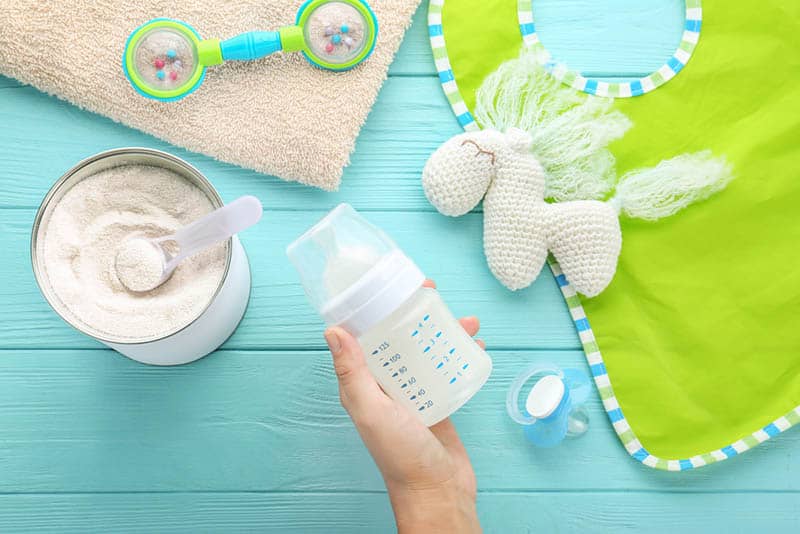
The first thing that’s worth noting is that baby formula and breast milk are the best sources of nutrition for your little one and you should always have at least a little bit of either in the mix.
While the idea of homemade baby formula alternatives might sound good on paper and they do help provide key nutrients like carbohydrates, various fats, and proteins, they’re unlikely to have everything your child needs to get proper nutrition increasing the likelihood of developing various nutrient deficiencies.
This is a big problem because these deficiencies can cause a great number of issues for him growing up and might end up having long-lasting consequences.
They might be a neat thing to try every once in a while, but they certainly can’t be your little one’s primary source of nutrients or a complete replacement for the two main ones.
So, if one commercial formula doesn’t work, don’t think that all of them are going to fail.
As I mentioned at the beginning of this article, the market for baby formulas has developed enough that you have plenty of options to choose from and you’re more than likely to find a formula that your child will be able to digest.
For example, there are baby formula options like Enfamil or Similac for children who don’t have the enzymes to digest lactose with the sugar fully dissolved to its basest ingredients.
This helps the little one’s body actually absorb the nutrients in question without having an adverse reaction to it.
Commercial baby formulas are also better than homemade ones because the ingredients are often hard to find and those ingredients often aren’t tested or approved by the AAP (American Academy of Pediatrics) making them a potential risk.
Once your child is old enough to start swapping over to solid foods, which is usually when he has his first birthday, you can even start using toddler formula.
I suggest doing it slowly though, consider it a transition between baby formula and solid foods.
When choosing which toddler formula to get, it’s best to stay away from ones that contain soy or any form of dairy as they’re the most likely ones to cause an allergic reaction.
I’d suggest taking your kiddo to the pediatrician to check for any potential allergies before deciding as you don’t want to find that out during mealtime.
If you’re looking for dairy-free baby formula alternatives to use instead of standard milk formulas, you may want to give plant-based toddler formulas a go.
They’re usually free from any GMOs, high fructose corn syrup, and gluten.
I recommend formulas that contain almonds as they’re one of the highest sources of nutrients, proteins, healthy fats, and calcium, as well as vitamin D and E, all of which are crucial for proper brain development
Another great alternative for dairy-free formula is tapioca.
Not only is it flavorful, but it’s also chock-full of vitamin C and, as a root vegetable, it’s highly unlikely to cause any problems with digestion.
It’s also a great source of calcium and iron, as well as being rich in fiber which will help normalize your kiddo’s digestion.
Buckwheat is a wonderful base that serves as one of the better alternatives to baby formula which makes it worth considering.
It’s gluten-free and it contains loads of healthy nutrients like iron, manganese, copper, magnesium, and phosphorus, as well as a ton of antioxidants and micronutrients.
What About Breast Milk Alternatives?

If your child isn’t lactose intolerant, you won’t really need to switch over to baby formula and you can still have a properly breastfed child, however, there are other problems that can arise that might not allow you to do so, not directly at least.
One of the main problems can be that your breasts simply aren’t producing enough breast milk on their own to satisfy your little one’s appetite.
The other could be a temporary foremilk/hindmilk imbalance which might end up leaving your child hungry despite having just eaten.
One of the other likely culprits could be a medical condition that requires you to take medication which makes your breast milk unsafe for consumption for young kids due to the strength of the medication.
But don’t worry, this doesn’t mean that you’ll have to drop breast milk altogether as there are easy alternatives for obtaining breast milk even when you can’t provide it.
One of the best alternative sources of lactation is using donor milk.
While formula feeding is an acceptable alternative, medical centers nationwide have managed to create milk banks where moms who produce excess milk can donate it for mammas who are less fortunate.
The human breast milk is properly pasteurized and tested before being frozen for storage so it lasts longer and is safe and healthy for your hungry little rascal to consume.
Honestly, it’s one of your best options as hospitals do ensure that every donor is tested for any potential diseases or illnesses that might transfer into the milk so you’re guaranteed to get a clean batch.
However, if you’re not as lucky as some to have a milk bank near you or if the waiting list is simply too long, you can also go about it through more informal means.
There are message boards, forums, Facebook groups, and similar social media gathering locations where mothers provide the same service, but without the actual waiting list.
All you need to do is find a donor nearby and make it happen.
While it’s usually free, sometimes you might end up needing to pay a small fee, but really it depends from person to person.
This process isn’t without its downsides though as the breast milk you receive here isn’t exactly monitored.
Therefore, there’s no guarantee that the milk is of a high quality, that it hasn’t been tampered with, or that it isn’t carrying some bacteria.
If you’re out of luck on the whole donor milk option and you can’t find any mamma nearby who’s donating milk locally or you simply find it too risky, swapping over to baby formula is always an option.
While using baby formula may seem unnatural, it’s still the next best thing and has been proven to be equally as nutritious as raw milk from a mother’s breast.
Not to mention that it comes in many different varieties which allows you to use it even if your child isn’t able to stomach regular breast milk.
Some formulas even have a taste similar to human milk!
The two most common options are soy formula and cow’s milk formula. For kids who have allergies, there are hypoallergenic formulas or for those whose bodies can’t dissolve milk protein just yet there are hydrolyzed baby formulas.
Depending on your preference, you can also find it in various forms, each with different price points, like powdered where you mix it in yourself, ones that are in a concentrated liquid that you need to reduce, or a ready to feed option that removes all the hassle.
I personally recommend getting the powdered formula as they’re usually the more accessible and budget-friendly option, plus, mixing it in doesn’t take long enough to warrant getting the other variants.
What’s more, a can of formula will last longer.
Baby formula is the next best thing should human breast milk be unavailable because most brands that are available for sale have to be approved by the FDA (Food and Drug Administration).
They require precise amounts of nutrients (at least 29 – to be specific) to be present in the formula itself with a number of those regulated to certain levels so they don’t pose any potential harm to the child consuming it.
Not only that, but the quality needs to be as similar to breast milk as it possibly can be, requiring the exact measures of fat and calories, as well as protein to be nearly identical, to be FDA-approved.
Other Options For Milk

There are some other options too however, these aren’t enough to be your child’s sole source of nutrition.
They can be mixed together with baby formula to change the taste and still provide your child with the sensation of drinking milk.
The idea here is that these types of milk are for those kids who want something other than cow’s milk or for parents who want purely plant-sourced foods.
But, despite this healthy endeavor, kids need their nutrients and deciding to rely on solely plant-based types of milk could potentially cause a lot of problems for your child as they won’t get the necessary nutrients.
It’s also best to hold off until your child is around 12 months of age to first introduce these new sources of nutrition into his diet.
At this point, he’ll slowly be transitioning to solids and toddler formula and won’t need to rely solely on breast milk.
If you want to find out more on how to best manage the use of these alternatives, I’d suggest setting up a meeting with a nutritionist and having him devise the best feeding plan for your little one.
Now that we have that out of the way, here are some of the best options available to you:
1. Coconut milk

First up on the list is coconut milk, a personal favorite of my own.
It’s a good source of certain nutrients for a slightly older toddler.
You can find it canned or in a carton at local stores or online, but try avoid the canned option as it contains too many substances that are unhealthy for child consumption like a high percentage of saturated fats.
The coconut milk that comes in a carton is a lot more child-friendly despite still having a few odd additives here and there that make it less desirable than some other options.
That said, the reason why it’s good in the first place is that it’s an amazing source of various vitamins like vitamin A and B, especially vitamin B12.
It’s also a great source of iron and a fatty acid called lauric acid, helping reinforce your little one’s immune system and is ideal for handling colds.
2. Goat’s milk
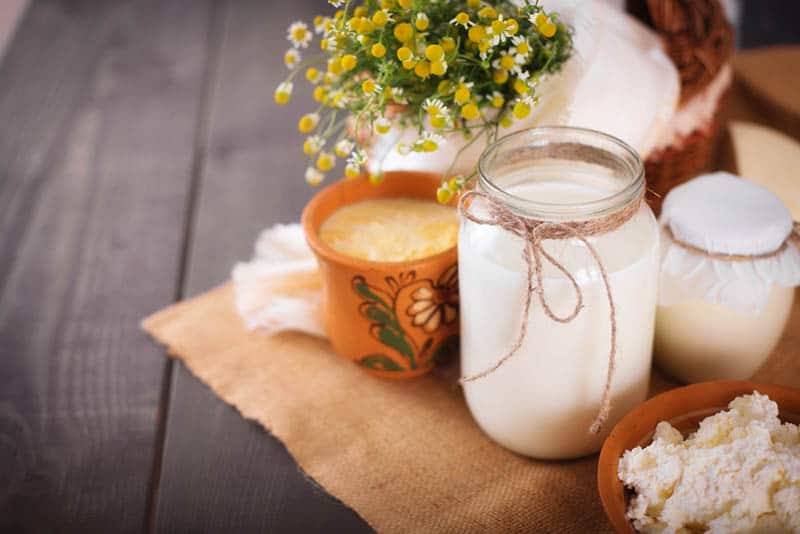
Next up is the only non-plant-based milk option on this little list and that’s goat’s milk.
It’s a slightly healthier option than the usual cow’s milk that most parents default to once the baby is off breast milk, providing more nutrients and more protein than the alternative.
It also contains less lactose for kids who are still having trouble processing lactose.
The one downside is that it’s a bit pricey, so do watch your budget if you opt for this as the alternative.
And, as with any other animal-based kinds of milk, never give it to your child raw.
Make sure that it’s fully pasteurized to prevent any risky diseases from developing due to the bacteria often found within.
RELATED: All You Need To Know About Goat Milk Formula For Your Baby
3. Soy milk

While soy milk was praised as the next best thing during its initial introduction due to being the most similar to regular cow’s milk in texture and composition, it later turned out to have a few nasty drawbacks in terms of production.
These were the usual culprits for anything grown on farms like excessive pesticide use or resorting to GMOs.
So, if you’re looking to get soy milk, first make sure that it’s labeled as a certified organic product before purchasing so you can minimize the risk of your child being exposed to these unhealthy practices.
4. Almond milk
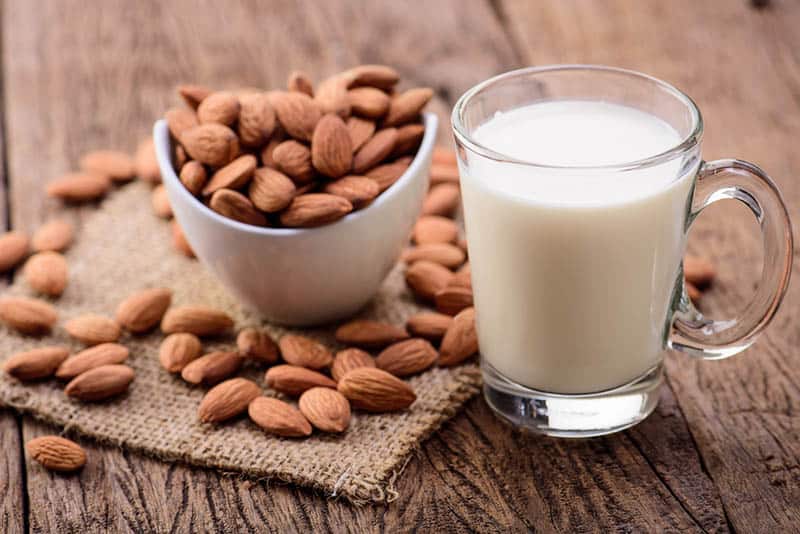
Yet another popular type of milk on the market, one that’s low in calories and high in vitamin B12 and calcium.
However, it’s low in the necessary healthy fats and proteins which is why it’s not recommended to be the sole nutrient source for your child at any stage of development.
It’s also not a safe option for kids who are allergic to any form of tree nut as they might end up suffering a severe allergic reaction.
5. Hemp milk
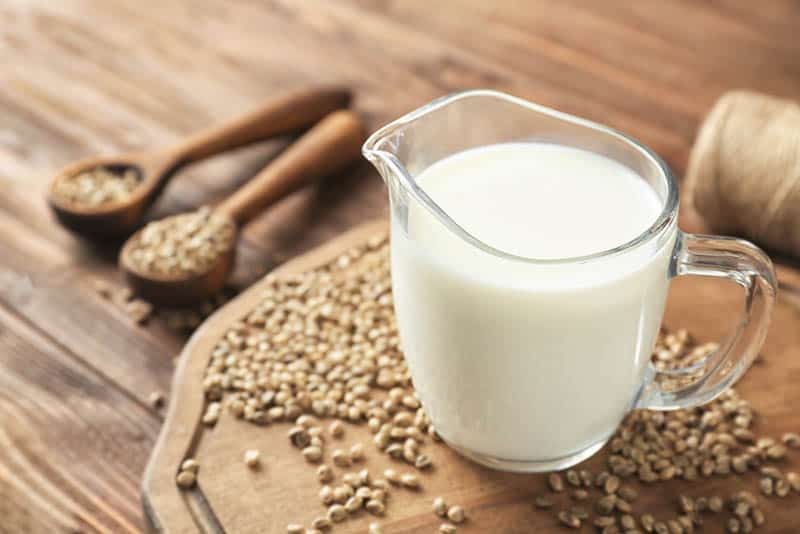
I know there’s a stigma when it comes to the Cannabis plant however, it’s recently proven to be a rather healthy alternative for a variety of products, milk included.
It carries a very nutty flavor to it which some people might like and others might not enjoy.
The good part is that it contains a healthy amount of fat, similar to that of regular cow’s milk as well as a number of nutrients like potassium and Omega-3 oils if it was fortified further.
Hemp milk is also a lot easier to digest than some other alternatives, making it a good option for kids who still have a developing digestive system that might not be able to process regular dairy properly.
The downside is that it’s very low in calories and overall protein.
While calorie counting is something adults have started doing more often, kids need these calories to help fuel their growth, meaning this flag is bad in their case.
6. Rice milk
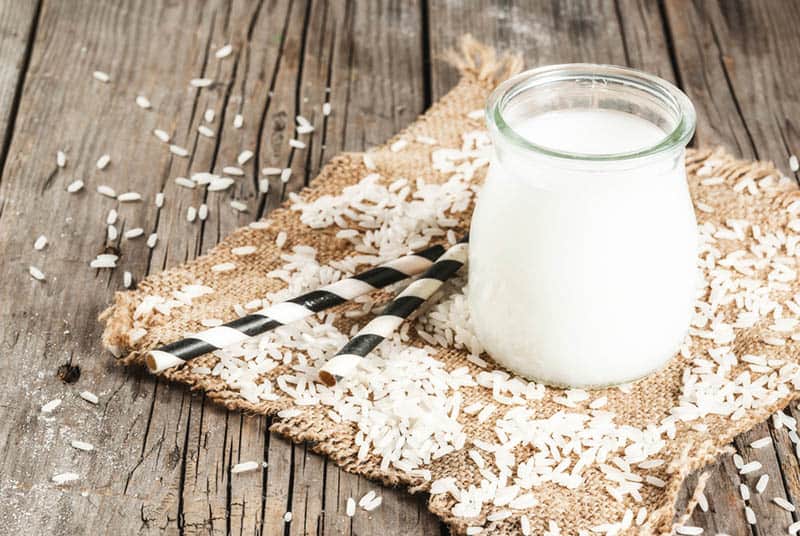
The final option is rice milk.
It’s one of the first alternative kinds of milk that was introduced to parents because it’s easy to make and was a decent alternative when there was no competition.
It has a very subtle flavor which makes it easier for the child to accept and it’s a good source of nutrients and calcium.
However, much like the other alternatives on this list, it’s very low on protein as well as calories.
The other problem is that rice itself has turned out to be a rather bad product because it’s been known to contain small doses of inorganic arsenic that, if poorly managed, can lead to it lingering in rice products and can cause a variety of problems for the child.
One of the main concerns is an increased risk of cancer as well as a great number of other potential issues that might spring up from continued consumption of rice-based products.
While it was one of the first, nowadays it’s definitely on the lower end of alternative milk products on the modern market.
In Conclusion
Breast milk is, without a doubt, the best source of nutrition for newborns and young children.
Should you notice signs of a drop in your milk supply or if your child develops an allergy, temporary or otherwise, there are various breast milk and baby formula alternatives on offer.
That said, some of these alternative methods can only be incorporated once the child reaches 12 months of age as they’re not enough to be the main source of nutrition and are better used as a supplement to help add variety to your little one’s diet.
The ideal suggestion from nutritionists, pediatricians, and other healthcare professionals is to stick to breast milk, whether your own or donated, until your child’s first birthday before introducing some of these alternatives to help make the transition to solids easier.
If breast milk is not an available option, baby formulas are the only other valid substitute.
Luckily, they come in many forms and at least one of them is going to fit all your baby’s needs.
If you want to use some of those alternative types of milk, I suggest mixing it in with your baby formula as an added source of nutrition, but otherwise they’re completely optional. Until next time, mammas.
READ NEXT: Can You Mix Formula And Breastmilk + Tips On How To Do It
Like this post? Please share or pin it for later. You can also stay in the loop and follow us on Facebook, Instagram or Pinterest.
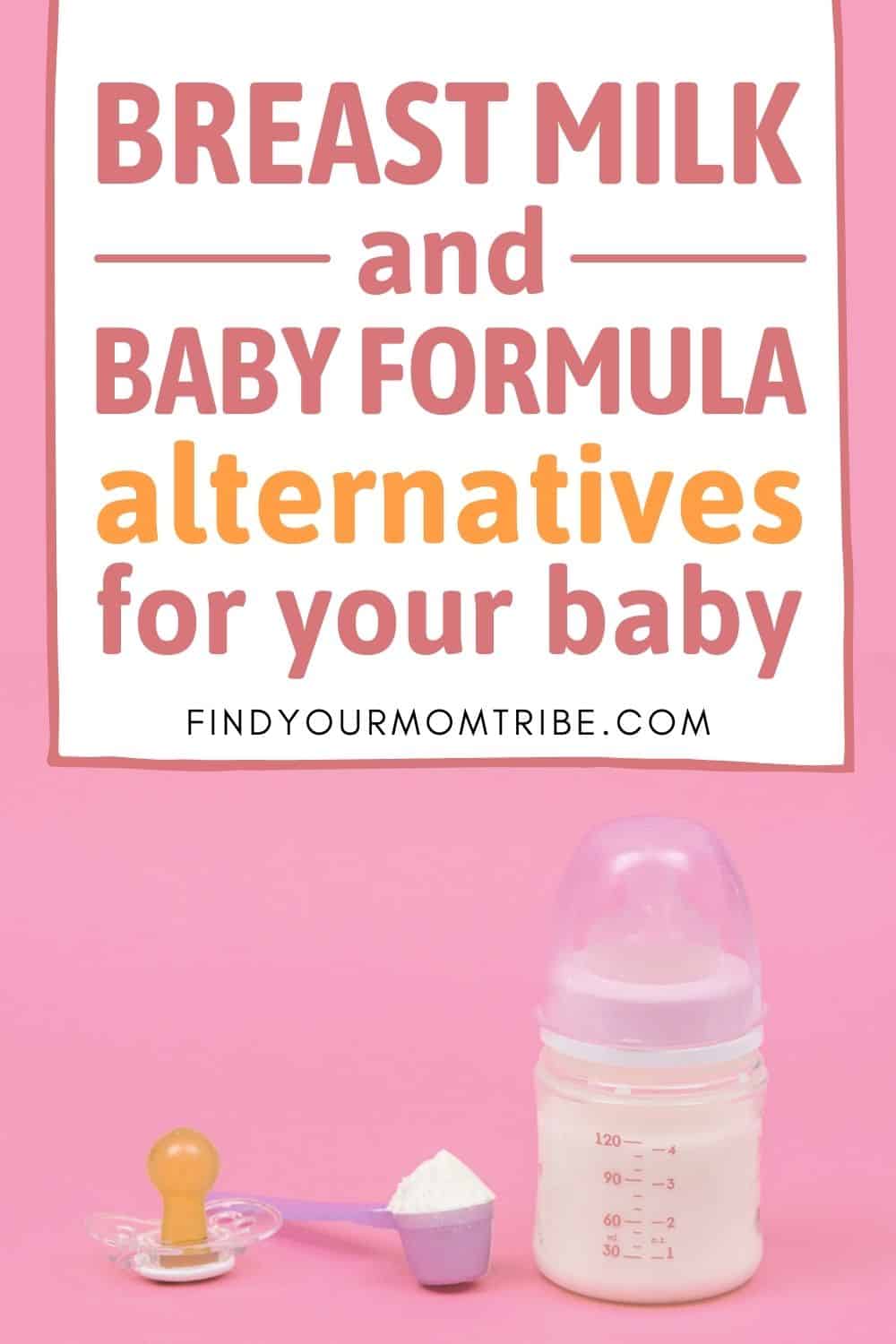
We love honesty! Find Your Mom Tribe is an Amazon Associate and we earn from qualifying purchases through affiliate links at no extra cost to you. Please see our full Amazon Affiliate disclosure for more information.

